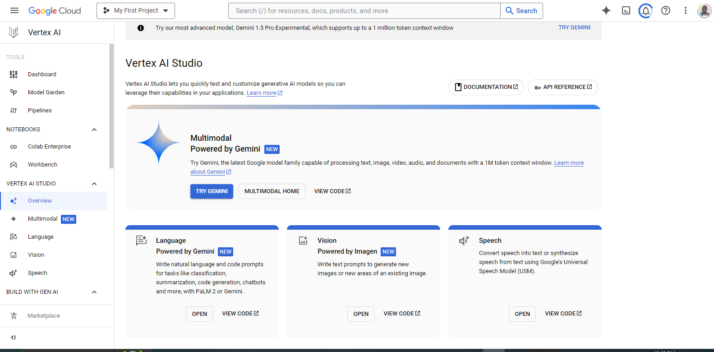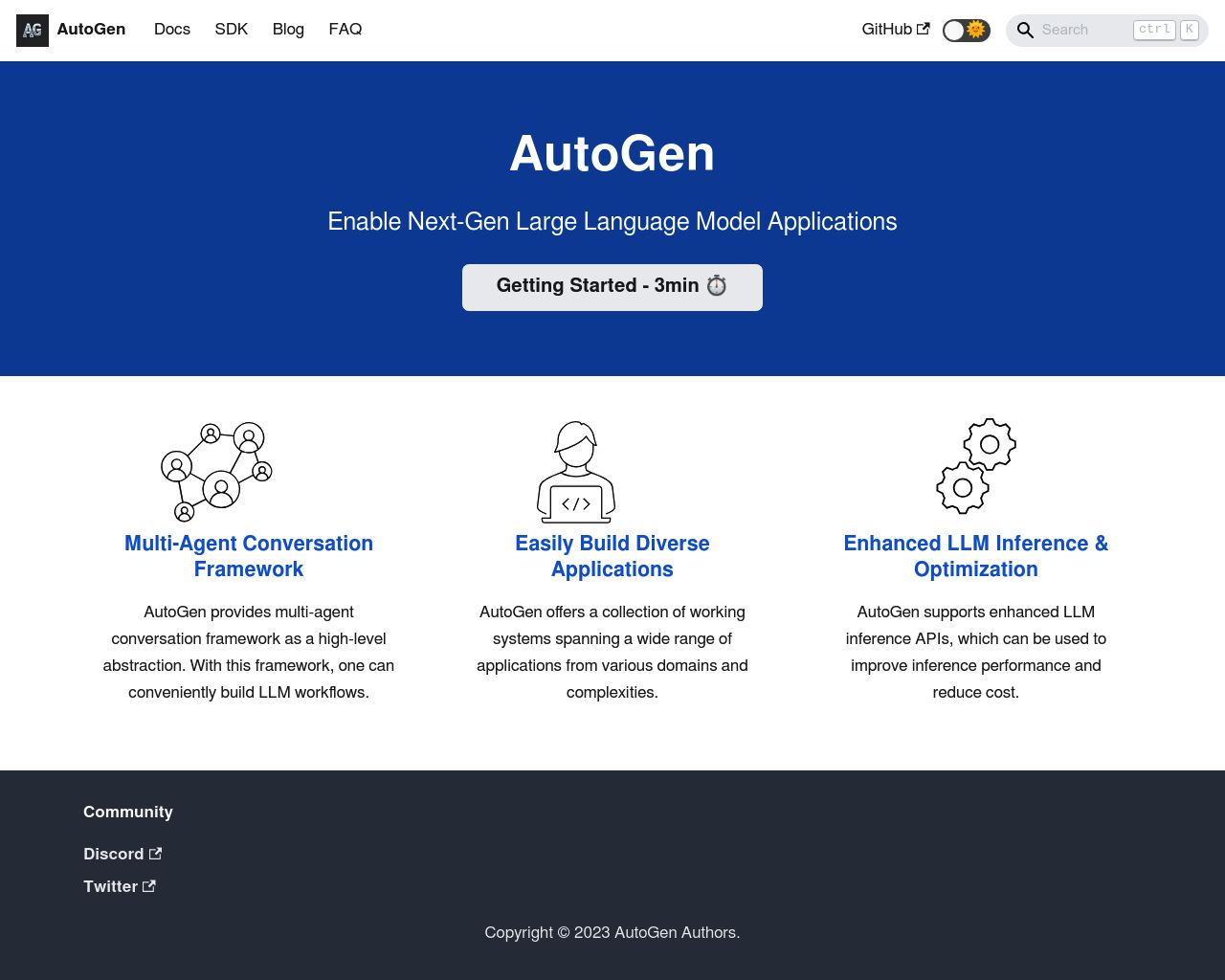The AI development landscape offers a wealth of powerful tools, each with unique strengths and capabilities. This comparison explores Vertex AI vs. AutoGen, and SmythOS, three leading platforms reshaping how developers, businesses, and AI enthusiasts approach machine learning and AI-powered applications. Vertex AI, Google’s comprehensive ML platform, delivers enterprise-grade features and seamless integration with Google Cloud. AutoGen, an open-source framework, excels in orchestrating multi-agent conversations for complex AI tasks. SmythOS emerges as a versatile alternative, combining powerful features with user-friendly design. This review delves into each platform’s key features, strengths, and limitations, providing insights to help you choose the ideal solution for your AI development needs.
Vertex AI Overview
Vertex AI empowers developers and businesses to build, deploy, and manage machine learning models at scale. This comprehensive platform integrates data engineering, data science, and ML engineering workflows, streamlining the entire AI development process.

Screenshot from Vertex AI studio.
Vertex AI’s standout feature is its support for multimodal generative AI models like Gemini. These models process text, images, audio, and video inputs, enabling advanced reasoning, multiturn chat, and code generation. The platform’s Model Garden offers a diverse selection of pre-trained models, including Google’s proprietary offerings and curated open-source options.
Vertex AI’s standout feature is its support for multimodal generative AI models like Gemini. These models process text, images, audio, and video inputs, enabling advanced reasoning, multiturn chat, and code generation.
Developers appreciate Vertex AI’s robust model customization capabilities. Users can fine-tune foundation models to align with specific use cases, improving cost-efficiency and response times. The platform also excels in MLOps, providing tools for model versioning, performance monitoring, and workflow orchestration.
While Vertex AI offers powerful features, it requires coding knowledge for model development and deployment. This may present a barrier for non-technical users seeking no-code AI solutions. Additionally, the platform’s integration with Google Cloud infrastructure may limit flexibility for organizations heavily invested in other cloud ecosystems.
Vertex AI shines in its enterprise-grade scalability and security features. The platform supports separate development and production environments, ensuring smooth transitions from testing to live deployments. With built-in data encryption, OAuth support, and IP access controls, Vertex AI meets stringent security requirements for handling sensitive data in AI applications.
AutoGen Overview
AutoGen empowers developers to create sophisticated Large Language Model (LLM) applications using multi-agent conversations. This open-source framework orchestrates customizable agents that interact with LLMs, tools, and humans to tackle complex tasks.

AutoGen’s core strength lies in its multi-agent conversation capabilities. These agents collaborate autonomously or with human input, adapting to diverse use cases. The framework maximizes LLM performance through enhanced inference features like tuning, caching, and error handling. This optimization proves crucial when working with resource-intensive models such as GPT-4.
AutoGen’s core strength lies in its multi-agent conversation capabilities. These agents collaborate autonomously or with human input, adapting to diverse use cases.
Developers can tailor AutoGen’s conversable agents to specific tasks, integrating LLMs, human inputs, and various tools. The framework supports both fully autonomous operations and human-in-the-loop problem-solving, offering flexibility for applications requiring human oversight. AutoGen has demonstrated effectiveness across a wide range of applications, from automated task solving and code generation to complex problem-solving in group chats.
While AutoGen offers powerful capabilities, it lacks some features found in more comprehensive platforms. The framework doesn’t provide a no-code editor, potentially limiting accessibility for non-technical users. Additionally, AutoGen’s documentation doesn’t mention direct integration with popular automation tools like Zapier, which could impact workflow efficiency for some users. Despite these limitations, AutoGen’s focus on enhancing LLM applications through multi-agent conversations and customizable agents makes it a versatile tool for developers working on advanced AI projects.
Feature Comparison
Vertex AI and AutoGen offer distinct approaches to AI development and deployment. Vertex AI provides a comprehensive suite of tools for machine learning and AI model management within the Google Cloud ecosystem. AutoGen focuses on orchestrating multi-agent conversations for complex AI tasks.
Vertex AI excels in enterprise-grade features like robust security, scalability, and integration with Google Cloud services. It offers advanced model customization, MLOps tools, and support for multimodal AI models like Gemini. However, Vertex AI requires coding knowledge, potentially limiting accessibility for non-technical users.
AutoGen shines in its flexible multi-agent framework, allowing developers to create sophisticated AI applications through agent collaboration. It optimizes LLM performance and supports both autonomous and human-in-the-loop operations. AutoGen lacks some enterprise features and doesn’t offer a no-code editor, which may impact its suitability for certain business environments.
Both platforms have gaps in specific areas. Vertex AI doesn’t mention direct Zapier integration or specialized web crawling tools. AutoGen’s documentation is less clear on production deployment options and data lake support. These limitations highlight the importance of carefully evaluating each platform against specific project requirements.
Feature Comparison Table
| Vertex AI | AutoGen | SmythOS | |
|---|---|---|---|
| CORE FEATURES | |||
| Visual Builder | ✅ | ❌ | ✅ |
| No-Code Options | ❌ | ❌ | ✅ |
| Audit Logs for Analytics | ❌ | ✅ | ✅ |
| Agent Work Scheduler | ✅ | ❌ | ✅ |
| SECURITY | |||
| Constrained Alignment | ✅ | ❌ | ✅ |
| IP Control | ✅ | ❌ | ✅ |
| COMPONENTS | |||
| Huggingface AIs | ❌ | ✅ | ✅ |
| Zapier APIs | ❌ | ✅ | ✅ |
| Data Lakes | ✅ | ❌ | ✅ |
| DEPLOYMENT OPTIONS (EMBODIMENTS) | |||
| Staging Domains | ✅ | ❌ | ✅ |
| Production Domains | ✅ | ❌ | ✅ |
| Deploy as Scheduled Agent | ✅ | ❌ | ✅ |
| DATA LAKE SUPPORT | |||
| Hosted Vector Database | ✅ | ❌ | ✅ |
| Sitemap Crawler | ❌ | ❌ | ✅ |
| YouTube Transcript Crawler | ❌ | ❌ | ✅ |
Best Alternative to Vertex AI and AutoGen
SmythOS stands out as the superior alternative to Vertex AI and AutoGen, offering a comprehensive AI automation platform that combines ease of use, extensive features, and unlimited use cases. Our innovative approach revolutionizes the way businesses harness AI technology.
Unlike Vertex AI’s complex coding requirements and AutoGen’s limited enterprise features, SmythOS provides an intuitive drag-and-drop interface that empowers users of all skill levels to create sophisticated AI agents. This visual builder dramatically reduces development time, making AI implementation 99% faster than traditional methods.
SmythOS provides an intuitive drag-and-drop interface that empowers users of all skill levels to create sophisticated AI agents. This visual builder… makes AI implementation 99% faster than traditional methods.
SmythOS excels in its feature set, addressing critical gaps found in both Vertex AI and AutoGen. While Vertex AI lacks direct Zapier integration and specialized web crawling tools, and AutoGen falls short on production deployment options and data lake support, SmythOS offers a comprehensive suite of tools. Our platform includes seamless Zapier integration, advanced web crawling capabilities, robust production deployment options, and full data lake support, ensuring that users have all the necessary tools at their fingertips.
The true power of SmythOS lies in its ability to handle unlimited use cases. From creating chatbots and automating complex workflows to developing custom AI applications, our platform adapts to any business need. This versatility, combined with our extensive pre-built API integrations and support for various AI models, enables users to craft tailored solutions that drive innovation and efficiency across industries.
From creating chatbots and automating complex workflows to developing custom AI applications, our platform adapts to any business need.
By choosing SmythOS, businesses gain access to a scalable, secure, and user-friendly platform that seamlessly integrates with existing systems while offering unparalleled flexibility for future growth. Our commitment to continuous improvement and user empowerment makes SmythOS the ideal choice for organizations looking to leverage AI technology effectively and stay ahead in the rapidly evolving digital landscape.
Conclusion
Vertex AI, AutoGen, and SmythOS each offer unique approaches to AI development and deployment. Vertex AI excels in enterprise-grade features and integration with Google Cloud, while AutoGen shines in flexible multi-agent orchestration. However, SmythOS emerges as the superior choice, combining the strengths of both platforms while addressing their limitations.
SmythOS stands out with its intuitive drag-and-drop interface, extensive integration ecosystem, and versatile deployment options. Unlike Vertex AI, which requires coding knowledge, SmythOS democratizes AI development, making it accessible to both technical and non-technical users. It surpasses AutoGen’s capabilities by offering a visual builder and no-code editor, enabling rapid prototyping and deployment of AI agents.
Our platform’s multi-agent collaboration features rival those of AutoGen, while our enterprise-grade security measures and scalability match Vertex AI’s offerings. SmythOS goes further by providing unique features like the Agent Work Scheduler, comprehensive logs and monitoring, and support for various AI models and data types.
Experience the future of AI development with SmythOS. Create a free account to explore our platform’s capabilities, or dive into our documentation for in-depth insights. Unlock the potential of AI-powered automation and transform your workflow with SmythOS – where innovation meets simplicity.